New York Rangers fans have been reading an inordinate amount of media coverage about the big guys who arrived in the Big Apple this summer, ready to change the conversation at Madison Square Garden starting next month.
First-year general manager Chris Drury has made good on his pledge to make the Blueshirts bigger and stronger, acquiring Barclay Goodrow, Sammy Blais, Patrik Nemeth, Ryan Reaves, Jarred Tinordi and Dryden Hunt. The group brings toughness and grit, not to mention an enforcer mentality – all of which, in theory, should make the Rangers (say it all together, now) tougher to play against.
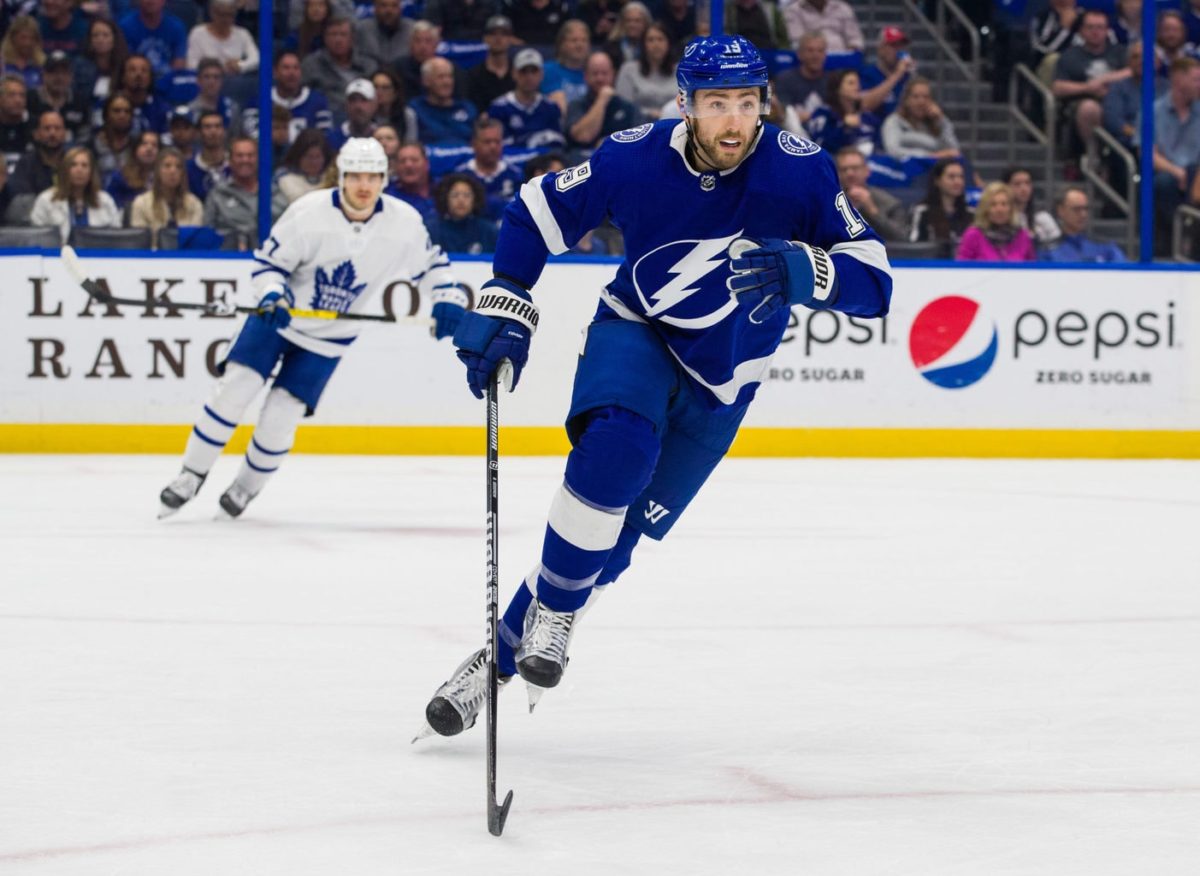
Yet this bottom-six forward makeover, for all the offseason hype surrounding it, won’t amount to much if a curiously less-covered group doesn’t deliver. At the risk of sounding obvious, it’s the team’s most important forwards, those who will be counted on to drive the Rangers offensively, that will play the biggest role up front if the club takes a major step back toward contention.
Here’s a look at what new coach Gerard Gallant needs and can realistically look forward to from the group of players that could comprise his Big Six in 2021-22.
Mika Zibanejad
The No. 1 center made a quantum leap in 2019-20, busting out to score 41 goals and record 75 points in just 57 games. Then COVID happened, Mika Zibanejad contracted the disease just before training camp, and the end result was a 2020-21 season that left more questions than answers.
Zibanejad looked like he had forgotten how to play hockey amidst a struggling start during which he scored three goals in his first 26 games. He then regained the form that made him resemble an unstoppable offensive force at the end of 2019-20, surging through the final 30 games of the shortened season to finish with 24 goals and 26 assists – yet much of that production came against lesser opponents.
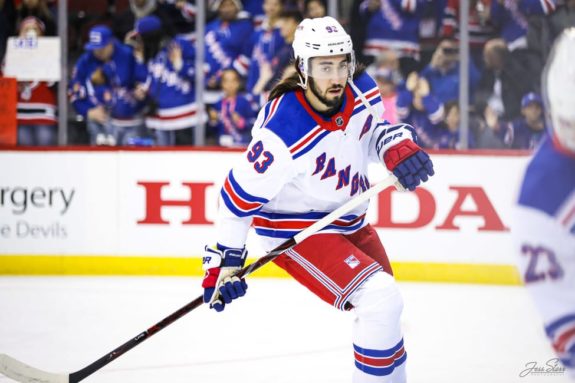
It’s sensible to chalk the pending unrestricted free agent’s early issues up to after-effects from the still-mysterious virus, as Zibanejad’s late burst should be at least somewhat reassuring to a front office that’s preparing to give him a huge contract extension. Still, Drury and co. probably want to make sure they would be buying the 2019-20 version of their top pivot, not the effective-yet-diminished version of last season.
Zibanejad should be all set up to put any doubts to rest. He’s theoretically healthy, will play with any number of highly talented linemates (perhaps even a reunion with Artemi Panarin) and has the external motivation of pushing up his payday next season. Another 40-goal effort and perhaps an initial 80-point campaign should be within reach. Anything not close to those totals should give the Rangers some pause as they ponder a continuation of the relationship.
Artemi Panarin
The superstar left wing’s season was even more eventful than Zibanejad’s, from the bizarre, troubling and highly-suspicious story out of Russia that resulted in Panarin missing nine games, to the premature and ugly end to his 2020-21 campaign thanks to an out-of-control Tom Wilson on May 3 that caused Panarin to sit out the final three contests.
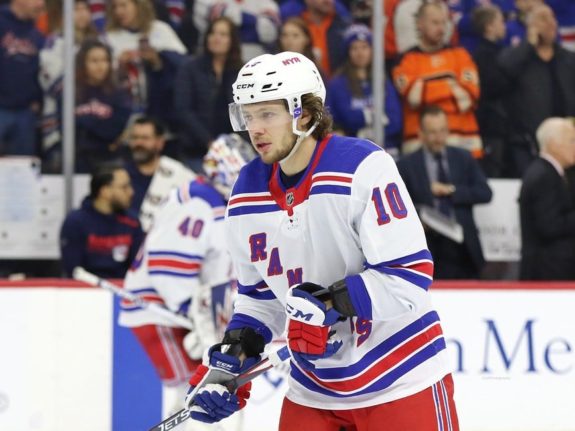
While the latter situation might not be over with, thanks to the aforementioned additions (especially noted Wilson nemesis Reaves), Panarin should be in the lineup for the Rangers’ much anticipated season opener against Wilson’s Washington Capitals on Oct. 13. Like Zibanejad, the club has every reason to believe it will get a performance which resembles that of 2019-20. Panarin recorded a career-best 95 points then, and lost in the fact that he played only 42 games last season was his career-high 1.38 points per game. Gallant will be counting on Panarin to join Zibanejad as the engines of his offense.
Alexis Lafreniere, Kaapo Kakko, Vitali Kravtsov
As crucial as Zibanejad and Panarin will be to the Rangers in 2021-22, their three young wingers might prove to be even more important. Gallant needs this trio of high-end kids to live up to their pedigrees as the Rangers look to replace both the scoring and defensive acumen lost in the departure of Pavel Buchnevich for salary-cap reasons.
Alexis Lafreniere certainly seemed on his way to doing that toward the end of last season, as the top overall draft pick in 2020 started to flatten the learning curve, recording seven of his 12 goals along with three assists over the final 19 games. The elite puck skills and skating may have been hampered by the uncertainty of the COVID-affected season, and the new coach will want even bigger things (read: production) in 2021-22.
Kaapo Kakko had a rough rookie season after being selected second overall in 2019, but there’s reason to believe he’s also trending upward after 2020-21. For all the focus on his lack of scoring so far, Kakko’s 19 goals lead all players in his draft class. Perhaps just as encouraging was his play in his own end and overall net effect on the game. Kakko’s Corsi for percentage rose nearly six points in his sophomore season, to 56.1, while his expected goals for percentage was 55.8. The Rangers racked up 254 scoring chances for to 224 against while Kakko was on the ice, along with 106 high-danger chances for to 89 against.
Those metrics suggest Kakko might be ready to break out offensively, and that his defensive skills are also emerging, like Buchnevich growing into a well-rounded player who could be used on the penalty kill. The jury is still out on Kakko, but the Rangers should expect his improvement to continue, even if a huge leap this season might not be in the cards.
Like Lafreniere, Vitali Kravtsov also provided some tantalizing flashes of what he might become late last season. Big, quick and strong on the puck with a powerful shot, Kravtsov looked at times like his long journey from the Rangers to Hartford to Russia (and back and forth again) might be terminating at Madison Square Garden. Playing with confidence and at ease in his limited opportunities, the ninth overall pick in 2018 scored two goals with two assists in 20 games after joining the Blueshirts following the Kontinental Hockey League season.
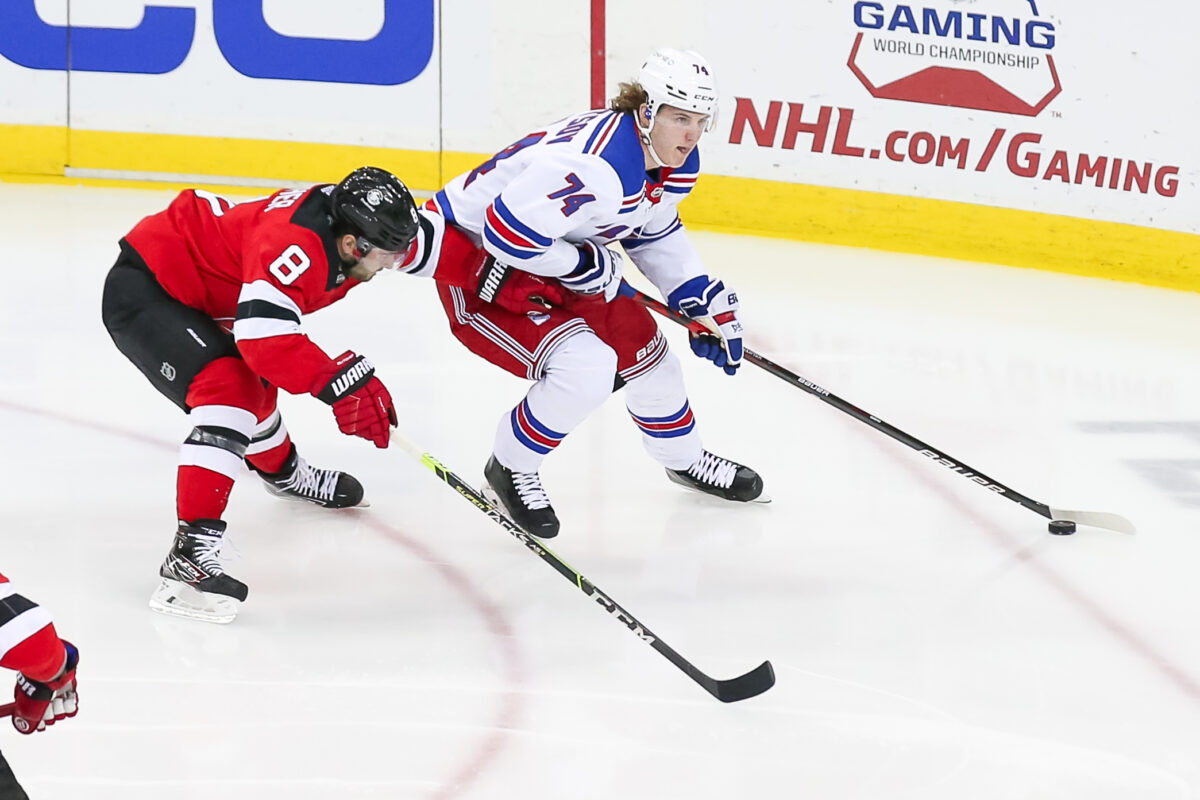
Though he might not find his way onto one of the top two lines to start the season, Kravtsov could force his way there in short order. There are finally signs that former general manager Jeff Gorton’s top-10 selection of Kravtsov, looked at as a reach by some at the time, might be ready to bear fruit.
Chris Kreider
Nothing’s ever simple with the enigma that is Kreider, who’s here for the long haul after signing a seven-year contract extension in February 2020. He followed up a strong 24-goal season in 2019-20 with 20 in 50 games last season – yet the worries that Kreider’s deal isn’t going to age well only intensified. He scored 11 goals on the power play, many while standing in front of the net – a skill sorely needed on a Rangers team that was heavy on flash and short on size and strength.
Yet Kreider endured one of his perennial disappearing acts as well, a 22-game stretch in which he scored once at even strength. The career Ranger’s game also appeared to be growing increasingly specialized, with his proficiency from in close balanced out by the disappearance of his speed-and-power game, the lethal rushes that Gorton paid $45.5 million over the life of the contract all but nonexistent.
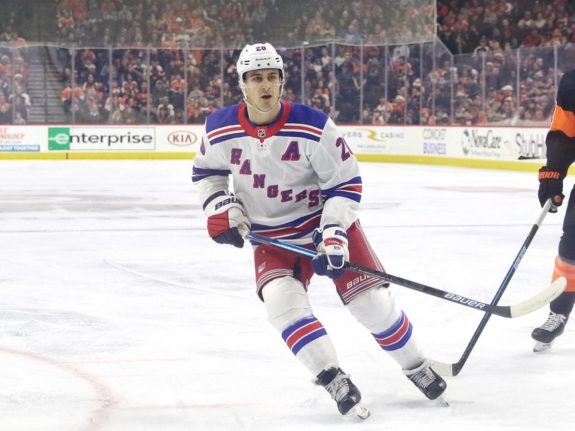
Still, Kreider probably has the inside track at starting the season on Zibanejad’s flank, be it on the left or right side. However, with more depth and hungry young players pushing for bigger minutes, Kreider will need to work harder to stay there. The nine-year veteran could well be named the next captain of the team, but despite his sought-after contributions, he could be filling that leadership role from the third line. Gallant needs a consistently engaged and effective Kreider as he works to establish the Rangers’ changed identity and stabilize a roster in flux.
Ryan Strome
It’s rare that any player continues to be looked upon with doubt and suspicion after putting together the two best seasons of his career, but that’s the situation for presumptive second-line center Ryan Strome, expected to reprise his role as Panarin’s man in the middle for the third straight season. Strome has put up 108 points in 126 games over the past two seasons in a Blueshirt, playing mostly with the high-energy left wing during that time.
It’s difficult to evaluate whether the delayed blossoming of Strome, drafted one spot before Zibanejad in 2011 at fifth overall, has occurred because he’s riding Panarin’s coattails – or if his strong chemistry with the Russian star has lifted both players’ games. Regardless, there seems to be major doubt about the Rangers’ desire to sign him long-term before he becomes an unrestricted free agent after the season. Should Strome turn in another season like the last two, the cost to lock him up is likely to be at least in the $6-7 million per range or more, perhaps over five years. As with Buchnevich, the club might not be able to pay that given the payroll flexibility it will need over the next few seasons.
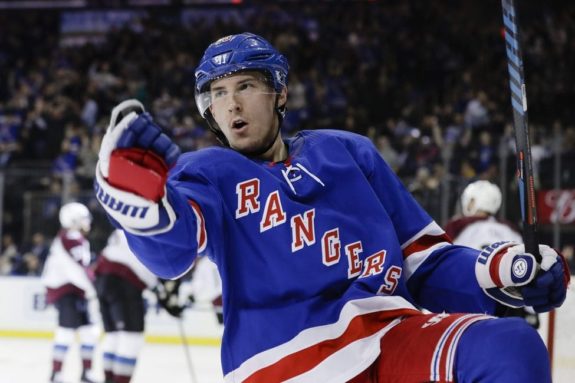
Nonetheless, the Rangers hope Strome can at least approximate his production of the past two campaigns as they try to return to the playoffs in 2021-22. He and Panarin will ostensibly be playing their first full schedule together since Panarin’s arrival in 2019, and like Zibanejad, Strome also has the motivation of his pending UFA status. A career-best season for the 28-year-old wouldn’t be a surprise.
Top Six Filled With Uncertainty, High Ceilings
The Rangers’ newfound grit to balance out the lineup was much-needed and has garnered plenty of attention. Drury’s hope is that it doesn’t continue once the season starts. His team will ultimately go as far as a talented group of top-six forwards with plenty to prove takes it, so the GM has to be crossing his fingers that a return to form for Zibanejad, continued dynamic production from Panarin and the anticipated rise of Lafreniere, Kakko and Kravtsov end up grabbing more of the headlines.
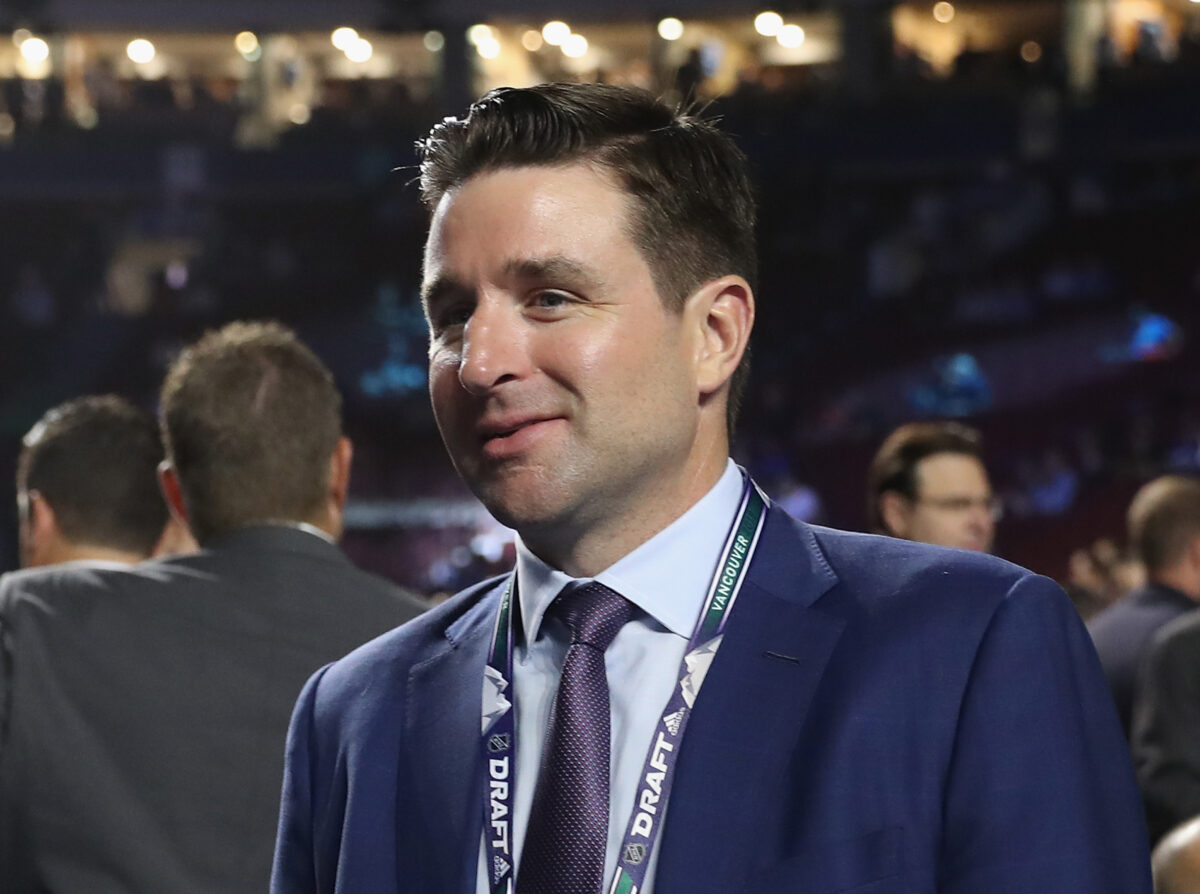
The added muscle at the bottom of the Rangers’ lineup should help – but only if the team’s top forwards score enough. Drury and Gallant are counting on it.